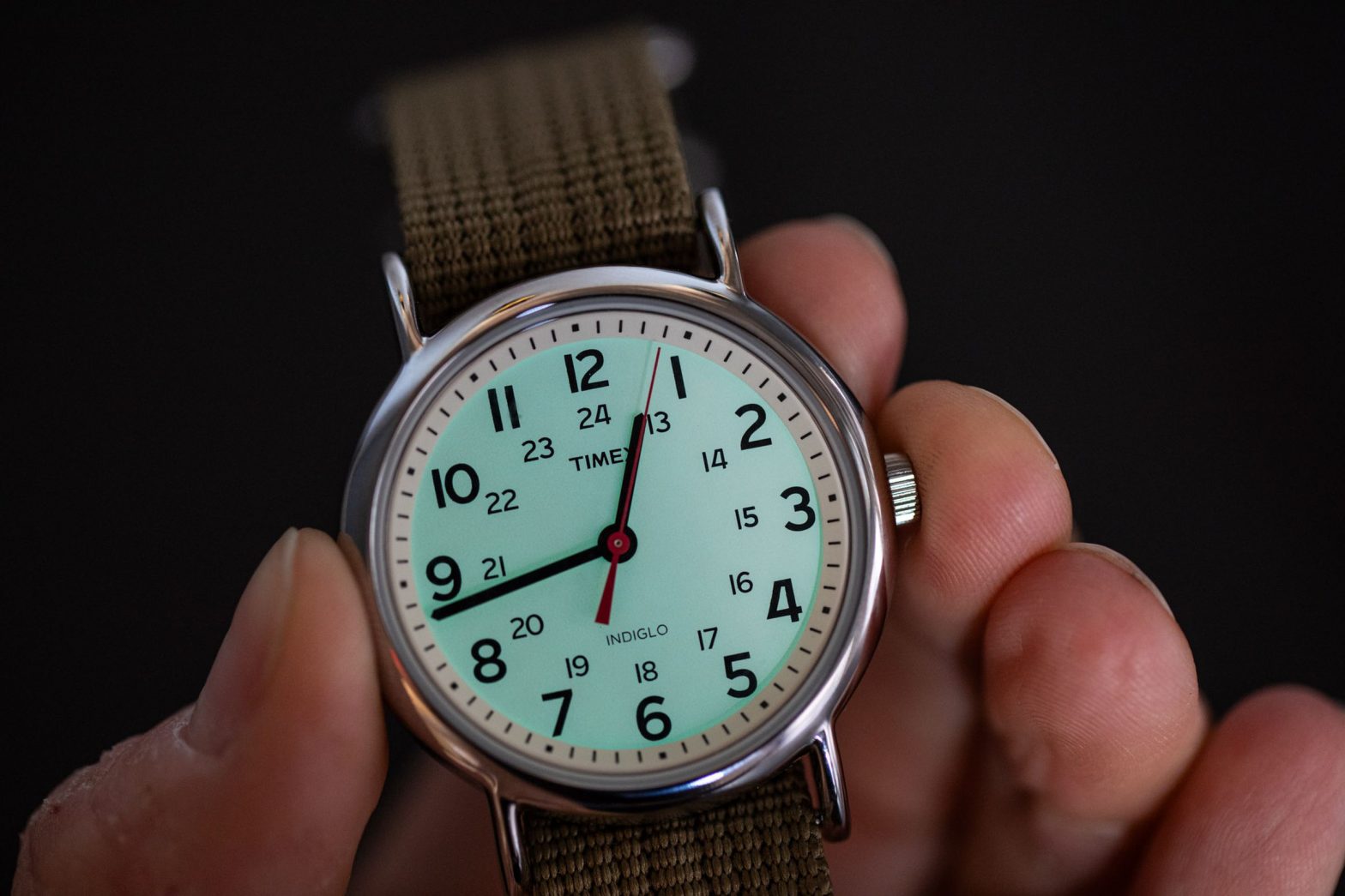/
Once upon a time, you had to press a button to see portable computers in the dark.
Share this story
If you buy something from a Verge link, Vox Media may earn a commission. See our ethics statement.
:format(webp)/cdn.vox-cdn.com/uploads/chorus_asset/file/24922625/236748_BOTM_Timex_Indiglo_watch_AKrales_0121.jpg)
Long before the self-lit pixels of OLED phones illuminated our lives, there was a time many portable gadgets didn’t shine at all. Remember when the display of practically every Nintendo Game Boy was designed to be viewed by sunlight? Remember when it was tough to tell time with your average wristwatch after dark?
But in 1992, Timex popularized a push-button technology that could bathe any small display in a soothing, sea-green glow. And even though the actual button was often bad, it literally changed the face of portable electronics.
They called it Indiglo.
As a ‘90s kid, I thought Indiglo was the coolest thing. It still kind of is! Electricity energizes a layer of phosphorescent material as thin as a human hair, invisibly suspended beneath the watchface. It consumes as little as two milliwatts of power from a button battery to perform its magic trick.
I still remember my joy obtaining my first personal digital organizer with a glowing blue Indiglo screen, my first glowing watch, and eventually my first Palm Pilot. Sometimes, I’d stab the teal or black buttons just to watch them light up. I’d lie in bed under the covers and bathe in the glow, comforted that I’d always be able to jot down my greatest ideas in the middle of the night — or at least reflexively check the time.
Sometimes, I’d be annoyed by the crushing injustice that only Japanese kids could play Indiglo Game Boy under their covers and in their road trips late at night. At least I had my snap-on magnifier light.
:format(webp)/cdn.vox-cdn.com/uploads/chorus_asset/file/25255663/palm_pilot_indiglo_sean_hollister.jpg)
These were not great buttons, mind you! The watch ones in particular were stiff, squishy, hard to hold down. But it was a small price to pay for the power of night vision, particularly when it came with its own unearthly glow. My gadgets had been bitten by the radioactive spider, and a single press could let their superpowers show.
Indiglo certainly wasn’t the first way to illuminate a watch. Manufacturers once literally used glowing radioactive material — and the very first commercial digital watch, the Pulsar Time Computer, used inefficient LEDs to tell time. By 1993, Timex wasn’t truly competing against watches you couldn’t see at all, but rather watches with crappy push-button lights:
Electroluminescent lighting wasn’t something Timex invented, either. Lighting company Sylvania commercialized the tech as early as 1955, calling it “Panelescent” and sticking it into automobile dashboards, military naval instruments, clock radios, and night lights. Here are some old magazine ads I dug up:
:format(webp)/cdn.vox-cdn.com/uploads/chorus_asset/file/25255106/panelescent.jpg)
:format(webp)/cdn.vox-cdn.com/uploads/chorus_asset/file/25251305/panelescent_2.jpg)
Popular Science even had to issue something of a correction in 1995 when it featured a Limelite electroluminescent night light in its “Best of What’s New” section — because a reader pointed out he’d already been using a Sylvania light for four decades now!
But Indiglo wasn’t just cool because it harnessed electroluminescence. The brand was cool, too. The name “Indiglo” was so perfect, so recognizable, Timex justified an entire “Indiglo Corporation” to license out the idea to rivals like Texas Instruments and startups like Austin Innovations.
Austin Innovations was the 35-person company behind that “Limelite” night light featured by Popular Science, but it decided that brand name wasn’t enough — it wanted to sell Indiglo-branded night lights and clocks, too. So it did a deal with Timex to license the name and just the name, not any underlying technology.
Steve Stiles, who was CFO of Austin Innovations in the late 1990s, tells me there was no need to license anything else because there was no physical difference between lime and teal devices — just a change in the drive circuit’s frequency. “Changing the frequency changed the color,” he says.
Why do a deal with Timex at all, then? “It was worth it to put their name on it.” By 1997, the company claimed it had a robotic manufacturing line spitting out a night light every 2.5 seconds.
:format(webp)/cdn.vox-cdn.com/uploads/chorus_asset/file/24922623/236748_BOTM_Timex_Indiglo_watch_AKrales_0077.jpg)
I imagine the popularity of Indiglo also might have something to do with the relatively low amount of power it consumed. While the Timex Weekender we photographed for this story only lights up while the button is held down, the original Palm Pilot could keep on glowing until it went to sleep. The Game Boy Light lasted 12 hours with the backlight on and 20 with it off, according to Nintendo. The night lights consumed just 0.03 watts at the wall.
These days, we don’t worry about whether screens have lighting all that often. But there was a time lights weren’t guaranteed — even as recently as 2012, when this Barnes & Noble Nook and the Amazon Kindle Paperwhite became the first commercially viable e-readers with integrated lighting. (Honorable mention to Sony.)
:format(webp)/cdn.vox-cdn.com/uploads/chorus_asset/file/24922624/236748_BOTM_Timex_Indiglo_watch_AKrales_0108.jpg)
And despite the prevalence of screens with LED lighting and self-lit OLED pixels, Indiglo hasn’t entirely disappeared. It’s still a standard feature on watches as inexpensive as the $40 Timex Weekender that we bought brand-new for this story.
Some might be tempted to call it a timeless design. But now you know the truth: they all have a button that takes you right back to 1992.
